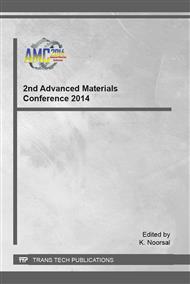p.414
p.419
p.424
p.429
p.434
p.439
p.447
p.452
p.457
Thermoluminescence Response of Germanium-Doped Silica (SiO2) Optical Fibers Subjected to X-Ray Irradiation
Abstract:
We have investigated the suitability of 8% mole of tailor-made germanium (Ge)- doped silica (Si02) cylindrical fibers to use as the detector, to map dose that received by the patient during the treatment especially for X-ray radiation. The diameters of these cylindrical optical fibers are; 362μm, 483μm and 604μm with different in masses and have been supplied by Telekom Malaysia (TM) group. To study the thermoluminescence reponse of these fibers, X-ray source with 60 kVp, 80 kVp and 100 kVp were used to irradiate the samples. The dosage of X-ray source was measured by the calibrated ionization chamber. The potential of these (Ge) - doped silica (Si02) cylindrical fibers as an efficient thermoluminescence (TL) material was investigated comparing the thermoluminescence response of the fibers with standard TLD 100. In confronting the variation of the dopant concentration (Germanium) along the core of the optical fibers, the individual calibrations so called as Elemental Correction Coefficient (ECC) were carried out. The results showed that, the best annealing temperature and time (to erase the previous signal) for the samples are 400 °C for one hour. The TL Yield (measured in counts per second per unit mass of fiber) increases as the dose of X-ray beams increases from 0.08 Gy up until 2.8 Gy. The results were clearly indicated that the TL response of SiO2 fibers were energy dependent. It can be concluded that, Ge-doped optical Silica (SiO2) optical fibers is very suitable to use as TLD to measure dose in medical applications.
Info:
Periodical:
Pages:
434-438
Citation:
Online since:
January 2016
Price:
Сopyright:
© 2016 Trans Tech Publications Ltd. All Rights Reserved
Share:
Citation:


